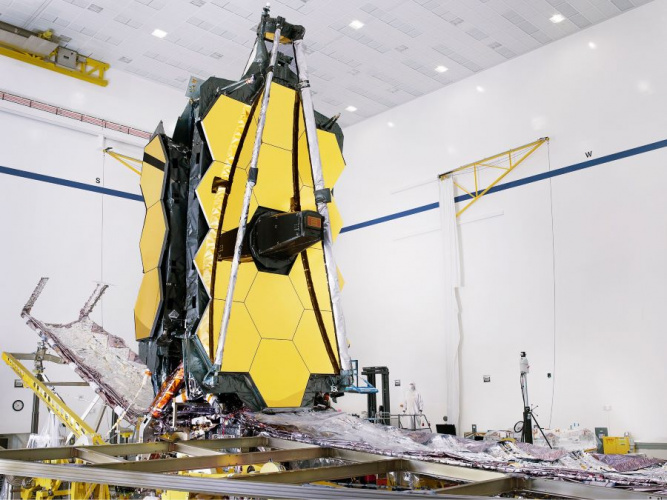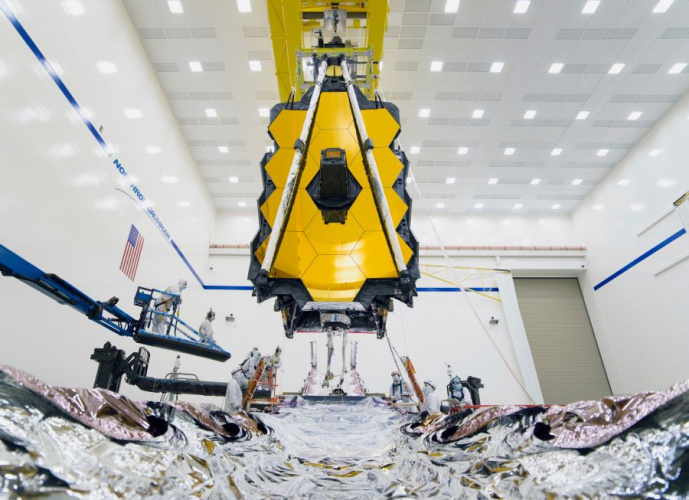
Engineers and technicians used a crane at Northrop Grumman’s facilities in Redondo Beach, California, to assemble the two halves of the space telescope, which has been in development since the 1990s. Once launched, the JWST will be stationed at the L2 Lagrangian point, exploring the cosmos predominantly using infrared light. This will enable it to observe high redshift objects that are too old or distant for the Hubble telescope to see. The mission has a planned launch date of March 2021.
James Webb telescope layers up for the sun
UK space: A new world of opportunity
According to NASA, the team slowly guided the two halves of James Webb Space Telescope into place, ensuring that all primary points of contact were perfectly aligned and seated properly. Alongside a 6.5-meter-diameter gold-coated primary mirror, the JWST also carries a suite of scientific instruments including infrared cameras and spectrographs, as well as an enormous sunshield to protect them. Now that the two segments have been joined mechanically, the next stage will see all the components electrically connected.
“The assembly of the telescope and its scientific instruments, sunshield and the spacecraft into one observatory represents an incredible achievement by the entire Webb team,” said Bill Ochs, James Webb Space Telescope project manager for NASA Goddard Space Flight Centre in Greenbelt, Maryland.
“This milestone symbolises the efforts of thousands of dedicated individuals for over more than 20 years across NASA, the European Space Agency, the Canadian Space Agency, Northrop Grumman, and the rest of our industrial and academic partners.”

Both of the telescope’s major components have been tested individually in environments that simulate the conditions the JWST will encounter during a rocket ride and orbiting mission a million miles away from Earth. Now that the halves been joined, the next phase will see engineers deploy the intricate five-layer sunshield, which is designed to keep the telescope’s mirrors and scientific instruments cold by blocking infrared light from the Earth, Moon and Sun. The ability of the sunshield to deploy to its correct shape is central to the mission's success.
“This is an exciting time to now see all Webb’s parts finally joined together into a single observatory for the very first time,” said Gregory Robinson, the Webb program director at NASA Headquarters in Washington, DC.
“The engineering team has accomplished a huge step forward and soon we will be able to see incredible new views of our amazing universe.”




Poll: Should the UK’s railways be renationalised?
I think that a network inclusive of the vehicles on it would make sense. However it remains to be seen if there is any plan for it to be for the...